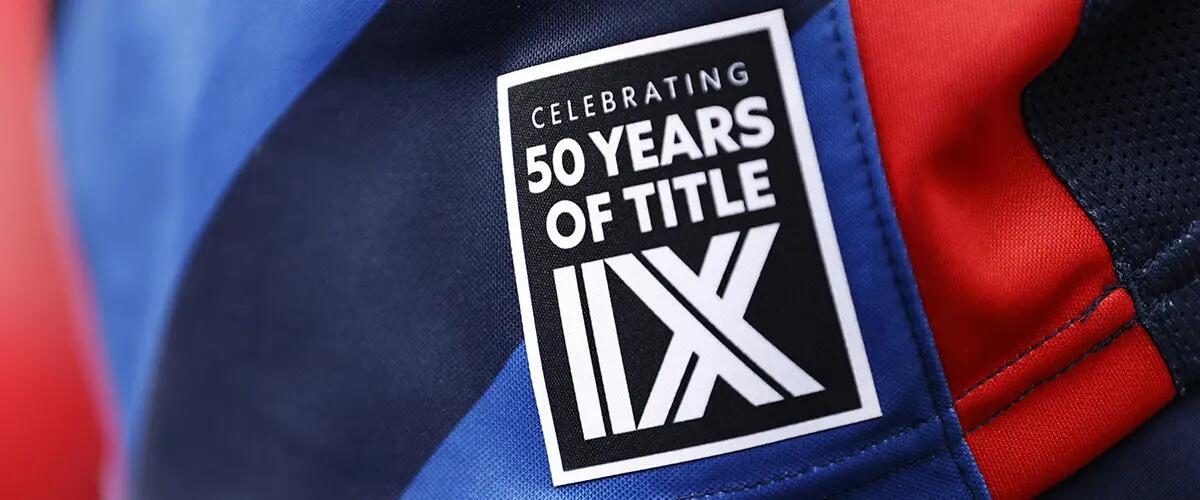
Title IX increased opportunities for women athletes, but there's still work to do
This opinion piece originally appeared in USA Today. It was written by Lisa Kaplowitz, a Rutgers Business School professor of professional practice in finance. She is also a co-founder and executive director of the Center for Women in Business.
I was a shy 17-year-old student when my teammates and I signed on to what would become the Cohen v. Brown University landmark Title IX case.
We just wanted to play sports. We didn’t know that our case would end up being appealed to the Supreme Court, setting a precedent nationwide, and that our testimonies would create the opportunity for so many future female athletes to compete at the collegiate, high school and recreational levels.
I didn’t know that holding up a pair of men’s boxer briefs in federal court – standard issue for both men and women at the time – would prompt nearly all college athletic programs to issue sports bras as part of the game and practice uniforms today.
I also didn’t know the experience would help me find my voice and passion for gender equality, which, 30 years later, has become my life’s work. It was the catalyst for me creating an affinity group for college women athletes, joining a nonprofit empowering high school girls through sports and, ultimately, launching the Rutgers Center for Women in Business – all to remove barriers, build community and empower women.
Title IX, part of the education amendment act of 1972 barring sex discrimination at schools that receive federal funding, turns 50 Thursday. I am grateful for the opportunity this law gave me to play sports at the collegiate level.
As a former Division I varsity gymnast, I have spent my career in the male-dominated world of finance as an investment banker, an executive and now a professor at Rutgers Business School.
I am who I am because of sports. The skills I mastered in the gym made me a better leader and co-worker. This isn’t unique. A study by the Women's Sports Foundation (WSF) and espnW found that 94% of women in the C-suite played sports growing up and more than 52% played at the collegiate level. For women to achieve parity in the workforce, it’s critical to ensure continued opportunities for girls and women in athletics.
As Title IX turns 50 years old, two generations of women have benefited from increased opportunities both on and off the field. In the pre-Title IX era, 15% of college athletes were women. Today, 44% of the opportunities to play sports go to women. Since the introduction of Title IX, 3 million more high school girls and 200,000 more college women have opportunities to play sports each year.
The expansion of women’s opportunities doesn’t mean a reduction of men’s opportunities: About 26% more high school boys and 62% more college men are participating in sports, according to the WSF.
While there has been progress, about 80% of educational institutions have yet to reach full compliance. Additionally, girls and women of color still lack opportunities to play sports at both the high school and college levels compared with white girls and women.
Here’s what we need to do:
►Invest in women’s sports. Colleges spend a fraction on women’s sports compared with men’s, but that may change. Members of Congress introduced a bill to analyze gender equity in NCAA tournaments, championships and other programs. By investing in the experience for the athletes, colleges demonstrate that women athletes are valued, which could increase interest.
►Market women’s sports. There is a massive disparity in the media coverage of women's sports. Nearly 90% of sports media coverage is dedicated to men. While the NCAA’s March Madness branding included the women’s tournament for the first time this year, there wasn’t enough focus on lucrative media contracts for the women. This would raise visibility (and dollars), which would lead to increased viewership and school funding, and could create more opportunities for female athletes.
►Pay women athletes. Without a pathway to self-sustaining income, many women can’t afford to remain in elite athletics. The U.S. women's national soccer team’s $24 million equal-pay settlement is a start. The NCAA’s ruling on name, image and likeness in which athletes can monetize their success also increases fans’ interest in women athletes and their stories.
We know women are interested in playing sports. We know they can compete at the elite levels: Women won nearly 60% of all the U.S. medals in the 2020 Tokyo Olympics. We also know institutions must increase opportunities for women athletes.
We also know the benefits of competitive athletics transcend sports. Most college athletes go pro in something other than sports, as the NCAA slogan goes. Sports has proved to set girls up for success later in life. Some of the highest paid female athletes have used their fortunes to become venture capitalists (Serena Williams) and professional sports team owners (Abby Wambach) and pay it forward by investing in women, creating a cycle of empowering and advancing women to move from the locker room to the board room, the courtroom, the operating room and beyond.
Title IX – Happy 50th! Thank you for the progress in women’s athletics – and the impact it has made on women, me included, after we hung up our uniforms. Let’s continue to champion Title IX – it’s a game changer.
Lisa Kaplowitz earned all-Ivy and all-ECAC honors and was inducted into the Brown Athletics Hall of Fame in 2018.
Press: For all media inquiries see our Media Kit


